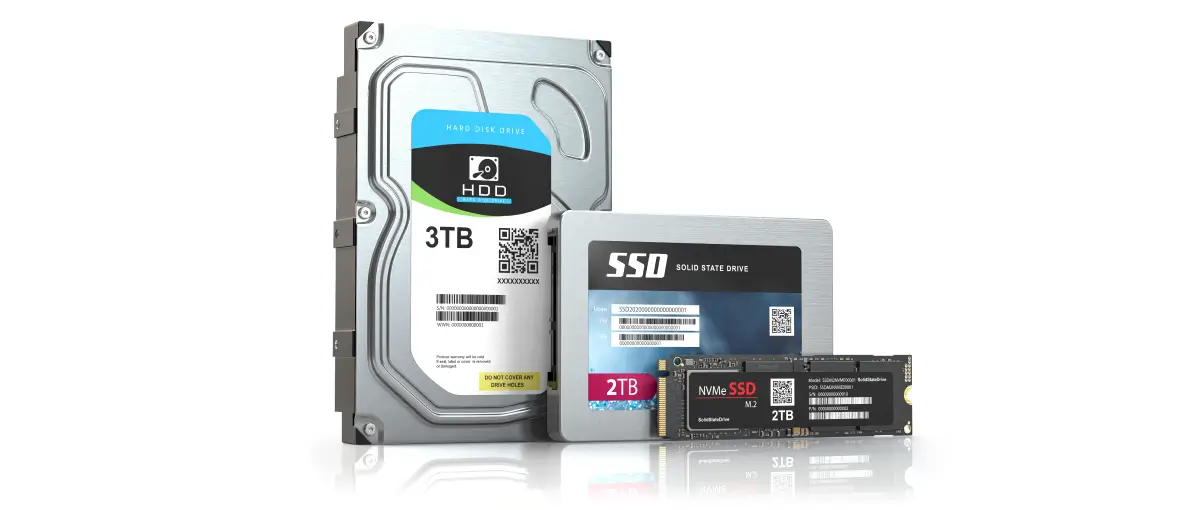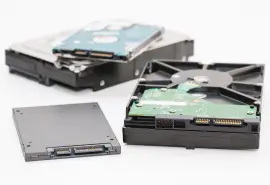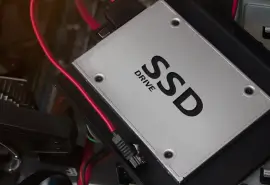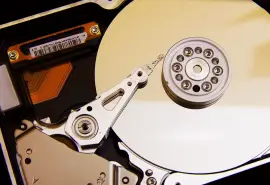Many tech watchers predicted that solid-state drives (SSDs) would replace hard disk drives (HDDs) as mass-market flash storage evolved. If that’s the case, does that mean we are finally entering the era of SSDs more than twenty years later?
It is not likely.
Hard drives continue to store most of the world’s data. The International Data Corporation (IDC) projects hard drives will account for around 80% of storage toward the end of the decade. Those estimates are outlined in the IDC’s latest Global StorageSphere Forecast for 2024 through 2028.
So, why can’t compact, cutting-edge SSDs dethrone HDDs despite the latter’s reputation as spinning rust?
The reason is a matter of usage and economics.
Key Takeaways:
- Solid-state drives offer high-speed performance for demanding tasks like data processing, real-time logging, content creation, and gaming. Hard drives are a much cheaper option for storing massive amounts of data.
- SSDs have become a staple in personal computers and data centers, but HDDs still fill a crucial role in the storage industry.
- The lower cost of disks and abundance of infrequently accessed data make HDDs an excellent candidate for archives and backups.
- Hybrid storage systems use both devices for optimized performance across multiple workloads.
Pros and Cons of Hard Drives and SSDs
The best storage media for a situation depends on the intended workload. Some tasks are better suited to specific devices. SSDs perform better in many personal and professional settings. That does not mean HDDs are useless to businesses or home users. Hard drives are often the backbone of data storage for cloud services, networked systems, and local backups.
These are the biggest benefits and drawbacks of each device:
| Storage Device Comparison | |
|---|---|
| Hard Disk Drives (HDDs) | Solid-State Drives (SSDs) |
|
Pros
|
Pros
|
|
Cons
|
Cons
|
The deployment of these drives usually mirrors their unique strengths.
Market Adoption for Magnetic and NAND Flash Storage
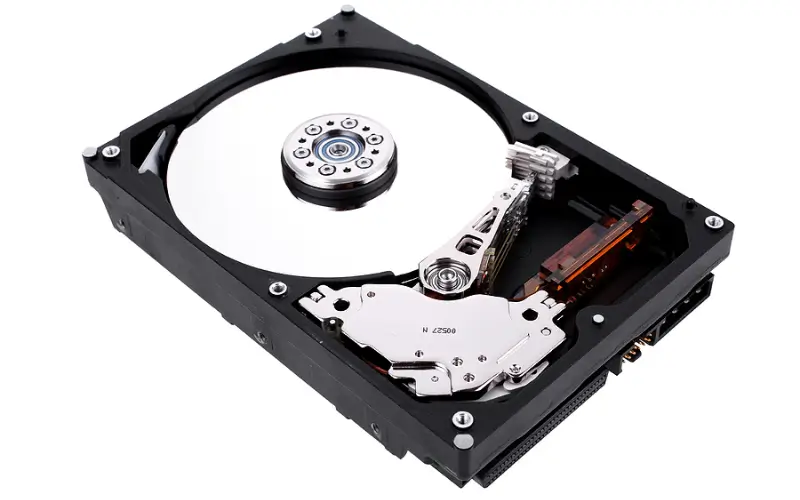
Hard disk drives were invented by IBM engineers in 1956 to solve a bottleneck in early computing. At the time, mainframes relied on punched cards and magnetic tape that stored sequences of data. This storage method required manual intervention and physical space for a growing number of card decks or tape libraries. The disk storage unit featured mechanical components and allowed IBM’s mainframes to randomly access data on magnetic platters without a user.
Hard drives quickly became the dominant storage medium. They have retained that position for more than half a century. In that time, disks were the primary storage devices for desktops, laptops, servers, and even handheld electronics like the iPod.
However, the development of NAND flash memory in the 1980s and 1990s presented an alternative to hard disk drives. NAND flash storage is the foundation of modern SSDs.
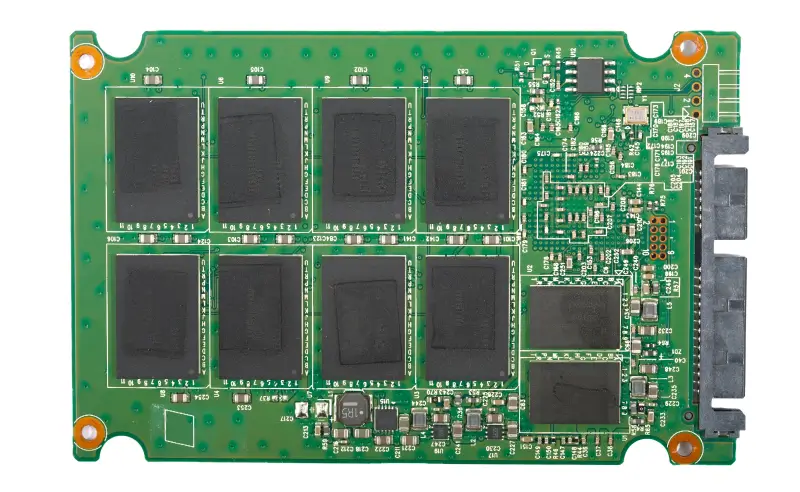
SSDs save data to a grid of cells. Each cell has an electric charge that determines the binary value of data. The lack of moving parts reduces latency between input and output. In addition, flash memory communicates with the host computer over more advanced interfaces and splits data across several channels at the same time. The whole design delivers improved read/write speeds over magnetic storage like hard drives.
As a result, SSDs have mostly supplanted HDDs in the personal computing market. SSDs are ideal system drives for much smoother performance while multi-tasking between programs, gaming, and streaming video. Therefore, the adoption rate of SSDs continues to increase as their cost per terabyte decreases.
But personal computing makes up a fraction of the data storage industry.
Barriers to SSD Dominance
Why won’t SSDs completely replace HDDs despite superior performance? The answer is fairly simple.
SSDs are still too expensive for the marginal benefit they provide many storage ecosystems.
The world created 149 zettabytes of data in 2024. That figure equates to over 400 million terabytes of data per day. And the data storage industry is expected to experience further growth in the coming years. Tech giants like Amazon, Microsoft, and Google plan to scale their data center operations to meet explosive demand.
SSDs do not have the storage capacity to compete with hard drives, given the staggering volume of new data. Especially since Amazon Web Services suggests that between 60% and 80% of global data qualifies as cold storage.
Cold storage refers to a tier of rarely accessed data. The practice stores that data on cheaper media, such as hard disk drives or magnetic tape, for long-term retention. Access frequency thresholds for cold storage differ by platform. Regardless, the tier always values the total cost of ownership (TCO) over performance. HDDs have a distinct advantage over SSDs when it comes to TCO.
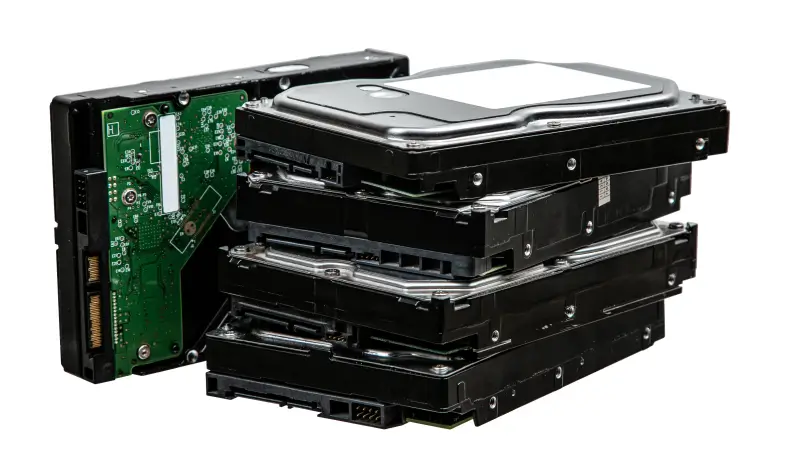
As of 2025, the cost per gigabyte of a hard drive is approaching $0.01. Enterprise SSDs will continue to carry steep price premiums. Recent analysis from Seagate concludes that the price of HDDs and SSDs will not converge in the next decade. Their experts predict that enterprise SSDs will cost at least six times more than hard drives through 2027. The lower power consumption of SSDs over their lifetime does not offset much higher acquisition costs.
Not to mention, producing enough SSDs for a wholesale switch from HDDs would require an enormous investment from manufacturers.
Therefore, cloud infrastructure consisting entirely of high-end SSDs by 2030 is wasteful.
However, data centers will likely deploy more enterprise SSDs for workloads that require near-instant access.
2030 Forecast: Hybrid Storage Environments
The storage industry in 2030 probably looks quite similar to today. A hybrid approach that takes advantage of the strengths of each storage device will likely still dominate.
In 2024, the Institute of Electrical and Electronics Engineers (IEEE) published a roadmap for the development of mass data storage. The report covers the future of NAND flash storage and hard disk drives as the industry seeks to balance cost and performance.
Here are some of their projections for the devices:
| NAND Flash Roadmap | |||||
|---|---|---|---|---|---|
| 2021 | 2023 | 2025 | 2027 | 2029 | |
| Capacity | 512 GB | 1 TB | 1-2 TB | 2-4 TB | 4-8 TB |
| 3D Layers | Low 200s | High 200s | 300+ | 500+ | N/A |
Source: IEEE Roadmap for Devices and Systems
| HDD Roadmap | |||||
|---|---|---|---|---|---|
| 2022 | 2025 | 2028 | 2031 | 2034 | |
| Capacity | 1-22 TB | 2-40 TB | 6-60 TB | 7-75 TB | 8-90 TB |
| Average Cost/TB |
$13.60 | $6.91 | $3.46 | $2.60 | $2.00 |
| Units (Millions) |
166 | 173 | 208 | 249 | 299 |
Source: IEEE Roadmap for Devices and Systems
The IEEE roadmap reveals a clear path forward for SSDs and hard drives for personal computing and mass data storage.
Why Hard Drives Are Here to Stay
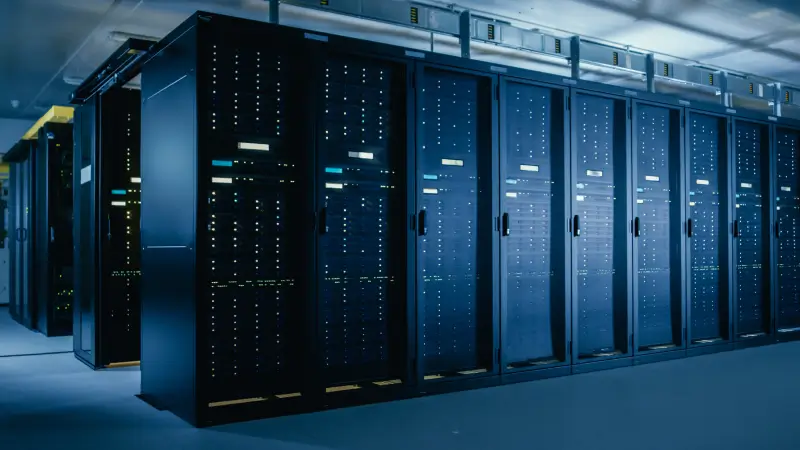
Data centers currently use a combination of HDDs and SSDs to manage trillions of files with acceptable latencies.
On occasion, that means storing hot data on an all-flash array to harness the blazing speeds of enterprise SSDs.
Yet, most services deploy hard drives for warm data and cool storage. Many companies invest in disk arrays for on-premise servers. These setups control costs while maintaining solid read/write speeds and reliable access times. The coldest data, such as deep archives, often resides on tape cartridges, which must be restored to the cloud for user access. Lower acquisition costs and performance demands continue to favor these storage mediums.
The types of hard drives matter, too. Hard drives and SSDs have specialized architectures for better performance in certain roles.
High-performance computing centers feature SSD pools with NVMe-over-fabric protocols to access data in microseconds. The nodes can transfer data in real time over a complex network. Workloads that require raw storage capacity and impressive speeds might use 3D NAND with higher layer counts. These SSDs have memory cells that are stacked vertically across the silicon wafer for much greater density.
Hard drives are achieving higher densities as well. Seagate announced a 36 TB hard drive for its enterprise product line in early 2025. Western Digital supplies data centers with 32 TB HDDs. Both companies sell hard drives with around 20 TB of space at major retailers. They have also committed to rolling out new models and recording technologies.
In addition, the concept of object storage removed the need for hierarchical file systems for data like videos, photos, audio, backups, or logs. Instead, files saved in the cloud have rich metadata and a unique identifier. Platforms then distribute data across multiple racks, zones, and geographic regions for fault tolerance. Files are assigned to a storage class when uploaded. Sometimes, algorithms can relocate data to a lower tier based on access patterns. This programmatic design makes systems more efficient and scalable.
So, while hardware advancements and streamlined software will keep improving cloud infrastructure, the economics of data storage tell us one thing:
HDDs will remain a data storage workhorse for the foreseeable future.
What It Means For Consumers and Enterprises
SSDs should see wider adoption among consumers as the cost of NAND flash storage decreases and performance standards increase. The device is well-suited to handle the immersive graphics of modern video games and sustained workloads from high-res streaming. And data centers will continue to use enterprise SSDs to boost speeds for the most critical applications.
The ongoing rise of SSDs does not make HDDs obsolete, though. For businesses or the general public. Hard drives are a much cheaper source of bulk storage and local backups. That simple fact makes these disks of spinning rust futureproof despite the performance trade-offs.
Because, when it comes to optimized storage strategies, it still takes two.
Secure Data Recovery has restored billions of files for thousands of customers since 2007. Our data recovery services feature a 96% success rate across all storage devices, free quotes, and a No Data, No Recovery Fee.

